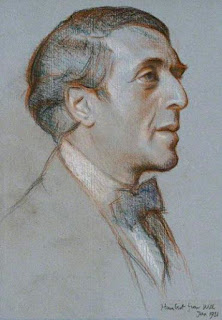I circled Kensington Gardens for a while before I dared open it. Given that it's about a children's book author who kidnaps the young actor who has been hired to play his character Jim Yang, I feared it might not be friendly to my own possibly-romanticized views of Barrie and my Beatles-obsessed early adolescence. The chance of horrific violence tainting either or both also felt like a real possibility. Happily, what I found between its covers was completely different--and far stranger.
 |
| Map by Arthur Rackham for the 1906 first edition of Barrie's The Little White Bird |
Kensington Gardens, translated beautifully by Natasha Wimmer, has been described by more than one reviewer as surreal. The narrative wanders through time, a dizzying weaving of facts and images, filled with musings on creativity, death, childhood, and cultural change. The son of a socialite and a rock musician, brother of a boy who died in childhood, Peter Hook (no relation to the Joy Division/New Order bassist) sees ghosts everywhere--whether literary or actual--in his own life, in Barrie's, in the lives of the Llewellyn-Davis boys who inspired the stories of Peter Pan.
Hook is obsessed with Peter Pan and even more so with his author. "Barrie, who suffered so much for us, who died for our sins, and whose only and unpardonable crime was having written an infectious creature carrying an incurable disease," he says. He is determined to find parallels between Barrie's and his own, even when this means ascribing motivations and feelings to Barrie that may have no basis in reality. Given that the even the narrator admits he is unhinged and self-destructive, perhaps we shouldn't take his musings too seriously. Fresán suggests as much in his afterword. But Barrie and Hook are both indelibly marked by the deaths of their brothers when they are children, and perhaps the same ghosts do haunt them both.
Kensington Gardens is thoroughly researched, and I learned a few new facts about Barrie. He was ambidextrous, for one. And as I suspected, like many writers, he was changed forever by World War I and the loved ones he lost to the conflict.
From Fresán's book, I also learned about poet Humbert Wolfe. A popular British writer of the 1920s, he's not well-known now, but I've seen his poem "Autumn (Resignation") on more than one Tumblr post. A version of Kensington Gardens also existed vividly in Wolfe's imagination, and he wrote an entire book on the park in a style not unlike that of e. e. cummings, including--of course--a piece on its famous statue of Peter Pan.
 |
| Humbert Wolfe, as drawn by his friend William Rothenstein in 1931 |
PETER PAN
Peter Pan
leave your dead
tunes, you faun
of gingerbread !
Over hills
you never guessed
,lonelier
than Everest,
blows an older
colder reed
the belovèd
children heed,
following
(O icy-thin !)
Pan, who was Piper
at Hamelin.
 |
| From my own visit, October 2014 |
Peter Pan as the Pied Piper is not the most unreasonable comparison. More likely, perhaps, than the duality between Jim Yang and Peter Pan, despite what Peter Hook may believe.

No comments:
Post a Comment